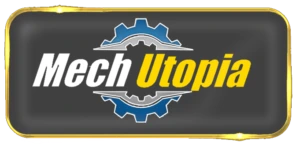This is a comprehensive guide to CNC machines and CNC machining. Beginners to professionals can have enough enjoyable and helpful deep information. Did you ever have questions about the CNC machining process, CNC machine types, or CNC machining applications? If yes you are in the right spot.
You will have a solid understanding of CNC machines and machining technologies at the end of this article.
I will guide you from the fascinating history of CNC machining to today’s competitive edge of it.
Computer numerical control machining has become an undeniable part of modern manufacturing.

With its roots in the 1940s, CNC machining has evolved over the years, leading to numerous breakthroughs in production and quality.
Let’s delve into the history, applications, and advantages of computer numerical control machining, shaping the future of manufacturing.
- A Historical Journey Through the Evolution of CNC Machines and CNC Machining
- What is CNC machining, and how does it work
- Types and sizes of CNC machines
- Types of CNC Machining Operations
- CNC Machining Equipment and Components
- Materials machined with CNC machines
- Diverse Applications of Computer Numerical Control Machining
- Advantages and Benefits of Computer Numerical Control Machining
- Is an Alternative to Using a CNC Machine
- The Future of CNC Machining: Embracing Industry 4.0
- What is Industry 4.0
- Conclusion
- FQA for CNC machining introduction.
- 1. What is CNC machining and how does it work?
- 2. How do CNC machines work?
- 3. What are the types and sizes of CNC machines?
- 4. What materials can be machined with CNC machines?
- 5. What are the advantages and benefits of CNC machining?
- 6. Is CNC machining the only option, or are there alternatives?
- 7. What does the future hold for CNC machining?
A Historical Journey Through the Evolution of CNC Machines and CNC Machining
The birth of CNC machining can be traced back to the 1940s, during World War II, when John T. Parsons and Frank L. Stulen developed a system for producing helicopter rotor blades using punched card data.
This innovation laid the foundation for the numerical control (NC) concept, which evolved into computer numerical control (CNC) technology.
Yaskawa, a company with a rich history in computer numerical control machining, has made notable contributions to the advancement of this technology. Founded in 1915, Yaskawa has continually pushed the boundaries of innovation, making significant development in the field.
One of them was using step motors to automate manufacturing processes. Step motors were capable of being controlled by big pre-computers, think like this if you can control the rotational rotor angle of a step motor digitally then you would convert it to linear movement by ball screws.
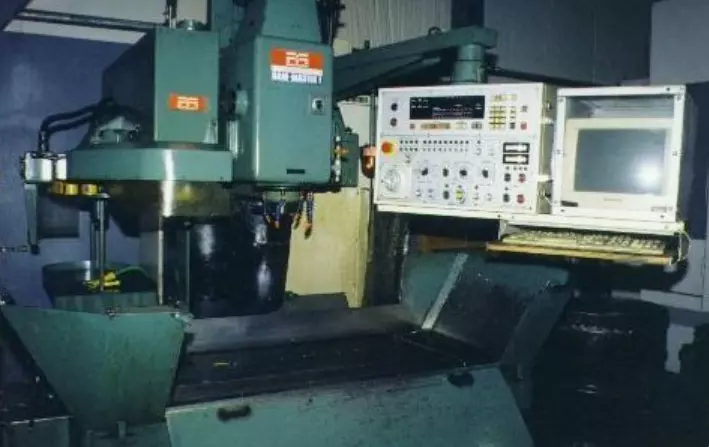
In the late 1960s, Yaskawa introduced its first CNC machine, the Yasnac 2000, which exemplified its commitment to precision and efficiency in manufacturing processes. This breakthrough marked an important milestone in the company’s history and set the stage for further advancements.
At that time CNC machines and their electronic controlling systems were huge in size and hard to manage. So it was a very expensive technology at that time so scientific and government industries were able to use it mostly.
Today, CNC machining is an integral part of manufacturing, finding applications in various industries, including aerospace, automotive, electronics, and medical devices.
Today we have a servo motor (which is an advanced version of step motors) that can position CNC machine axes and cutters with high precision in real time.
Personal and company-level a lot to contributions have helped shape the CNC machining landscape, enabling businesses of all sizes to access this technology.
The below table shows the historical development of Computer Numerical Control Machining Technology;
Know you have some enjoyable historical information about CNC Machining. It can be overwhelming in the first place if you are new to CNC technologies. I remember how I was scared when I got my first course in CNC machining. It was mind-blowing because there were a lot of new technologies for me there to digest.
After studying them stubbornly finally I could understand whole concepts and technology about CNC technologies. A small hint; you will not leave this area after deep diving into it. It is very enjoyable so even though I was a Mechanical Design Engineer and I end up using these machines every day.
What is CNC machining, and how does it work
How does CNC machining Process Work?
Now, let’s dive into the heart of the matter – the CNC machining process itself. Imagine you’ve got a CAD model, a perfect digital representation of the part you want to create. Here’s how it transforms from digital design to physical reality. The CAD model is first converted into a CNC program using CAM software. This program guides the CNC machine, instructing it exactly how to move to create your part. It’s a step-by-step process, where each movement is carefully calculated and executed. It’s like a dance, choreographed down to the last detail.
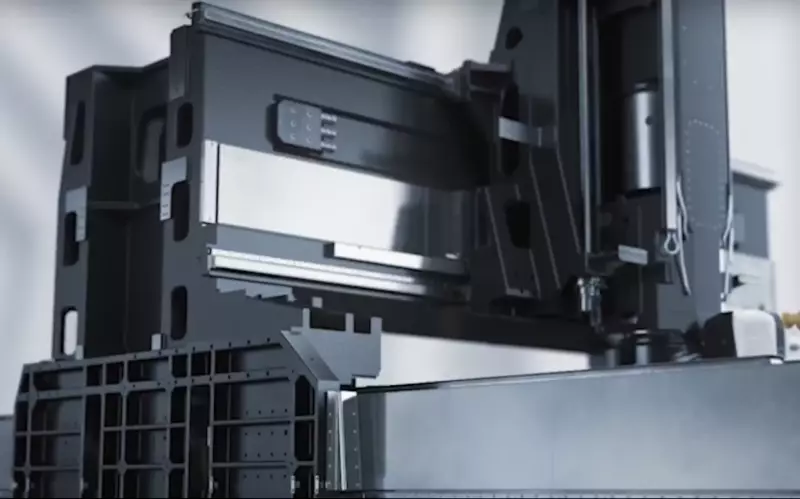
What is CNC machining?
CNC machining, short for Computer Numerical Control machining. At its core, CNC machining is a process that utilizes computerized control systems to automate and precisely control the movement of cutting tools in axes like X, Y, and Z.
I can guess you are now thinking about how a computer can control and move a machine better than a human right? As we mentioned in the history section the invention of electronic controllers, drivers, and servo motors enabled this technology.
How do CNC machines work?
In a way, you can think of CNC machines like robots. The biggest difference between robots and CNC machines is that Robots are mostly able to operate autonomously however CNC machines are heavily operated by human input(with G-Code or Iso G&M code programs).
Robots and CNC Machines in reality are machines operated by computers, electronic drivers, and servo motors. The way we command them is different. Robots do what they want but CNC machines do what machinist or programmer wants.
As I said CNC machines are heavily controlled by humans (machinists), The way we communicate with CNC machines is by writing CNC programs and send to the machine`s control line by line with an RS232 port.
To explain better let’s say I want to move the table(where we attached the workpiece) of the CNC machine 3 inches in the left direction.
Step-1: We write and send this command “G00X-3.0 “. The CNC machine`s computer reads the first line of the G-Code program.
Step-2: The computer calculates the proper variables(axis speed, frequency, steps, direction, etc.) for the controller.
Step-3: Controller send commands to the dedicated driver(in our case X Axis Servo motor`s driver). Every servo motor is responsible for an axis movement, like X, Y, and Z. So if our machine is 3-axis CNC then we must have three servo motors and a driver. In this step, the controller requests a turn from the servo motor.
Step-4: The driver sends pulses to the servo motor until it achieves a determined position on the X-axis. In our case, it will drive the CNC Machine`s table to the left for 3″ with maximum speed. After that whole cycle starts again from Step-1.
This is a very basic and understandable example of the CNC machine`s working cycle. These things happen in milliseconds and it is literally out of human sense.
Also, there is a feedback system that collects servo motors’ position data in real-time and finds the errors, and eliminates them in milliseconds. We call these features open-loop and closed-loop feedback.
Open-loop basically does not provide position feedback, it can use a servo motors encoder to find just the servo motor`s position, any mechanical looseness on linear guides and ball screws can affect the quality of the parts.
On the other hand, the Closed-loop feedback system has a linear digital position sensor beside the servo motor`s encoder. So it can catch mechanical errors( looseness, thermal expansion of machine) and eliminate them in real-time (by overwriting pulse signals). Also, keep in mind these machines are more expensive than open-loop controlled CNC Machines.
What are CNC Machine axes?
In the world of CNC machining, the term “axes” resonates throughout the industry, and it’s crucial to grasp its significance.
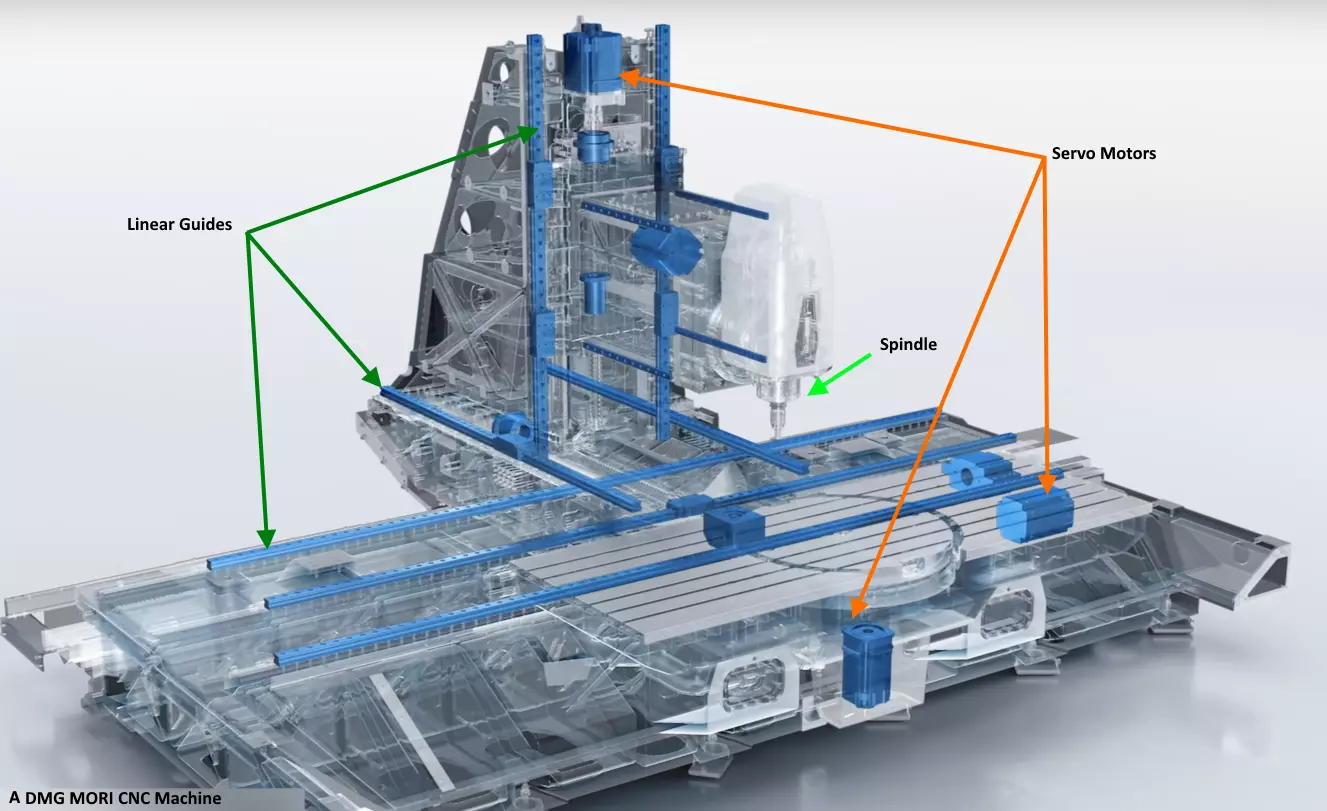
You’ll often hear phrases like “3-Axis CNC machine,” referring to machines equipped with the X, Y, and Z axes. Moreover, you might come across the intriguing realm of 5-Axis and 9-Axis machines, where complexity getting more with the capability to craft extraordinary parts.
As the number of axes grows, so does the intricacy of the CNC machine. Think of it as a symphony of motion unfolding before your eyes. Each axis adds another dimension, enabling the machine to explore new creative possibilities, conquer complex geometries, and fashion awe-inspiring components.
Types and sizes of CNC machines
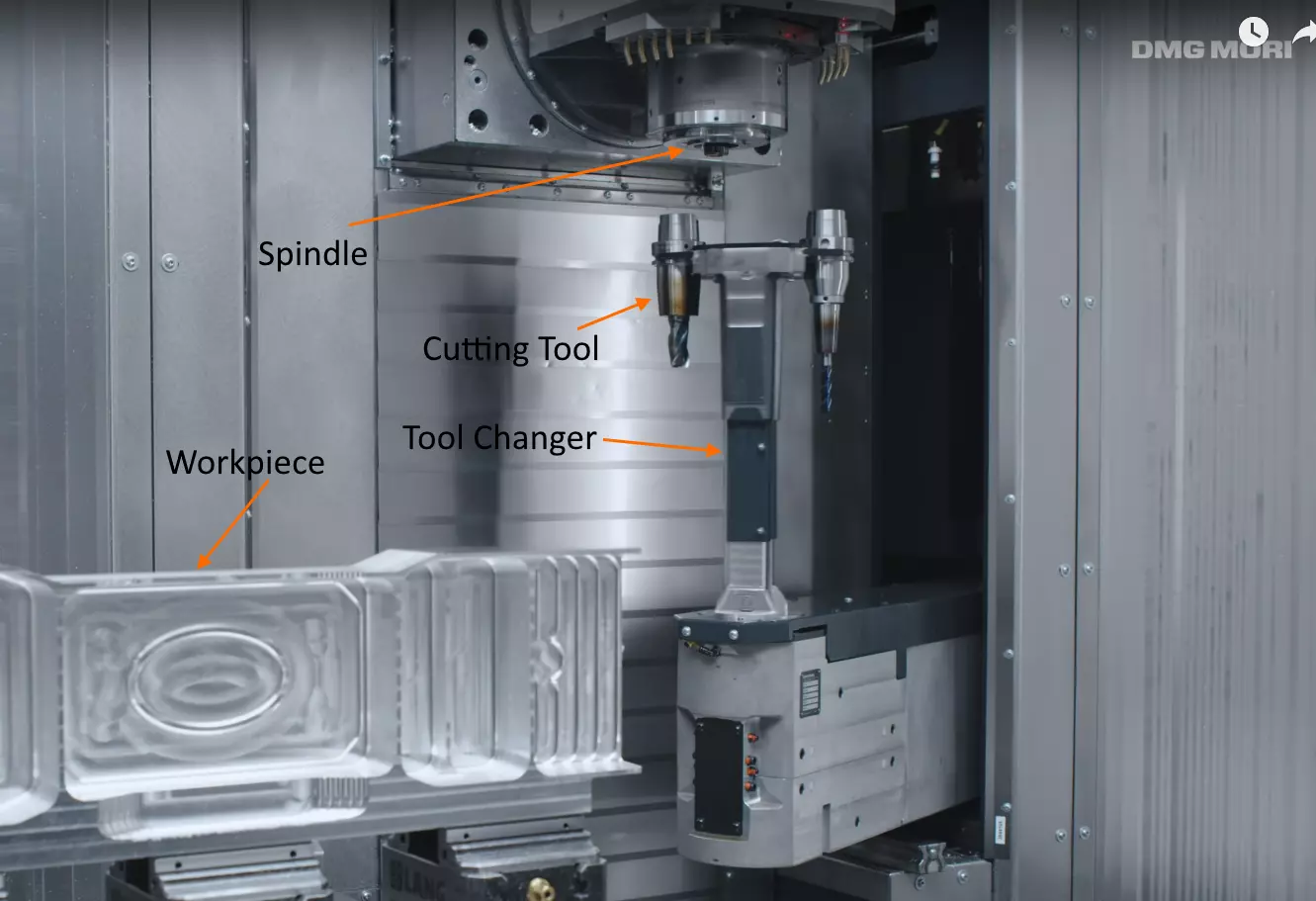
Types of CNC machines.
CNC machines come in a variety of types and sizes, each is designed to cater to specific manufacturing needs and perform specialized functions. Let’s explore some of the common types of CNC machines:
CNC Mills: These machines employ rotary cutters to remove material from a workpiece, enabling a wide range of operations like cutting, drilling, and shaping. CNC mills can create intricate three-dimensional parts and are available in vertical or horizontal configurations, depending on the orientation of the cutting spindle.
CNC Lathes: Specifically designed for cylindrical or rotational parts, CNC lathes rotate the workpiece while cutting tools shape it. They are dedicated to turning, facing, threading, and grooving, producing symmetrical parts with exceptional precision. Industries such as automotive, aerospace, and electronics frequently utilize CNC lathes.
CNC Routers: Known for their versatility, CNC routers are adept at cutting and shaping various materials like wood, plastics, and composites. These machines employ rotating cutting tools similar to mills but with a distinct configuration. Woodworking, signage, and prototyping industries often rely on CNC routers for their diverse applications.
CNC Plasma Cutters: Specifically designed for electrically conductive materials such as steel, CNC plasma cutters use a high-velocity jet of ionized gas (plasma) to perform cutting tasks. Ideal for metal fabrication, CNC plasma cutters excel at intricate shape cutting and profile creation.
CNC Lasers: By sending focused laser beams, CNC laser machines achieve high-precision cutting, engraving, and etching of various materials. Used in industries like signage, and jewelry serving tasks such as laser cutting, engraving, and marking with exceptional accuracy.
CNC EDM Machines: These machines utilize electrical discharges to shape and erode conductive materials. CNC EDM machines plunge electrodes into the workpiece to discharge material. This method is very useful for shapes that would be challenging to achieve using traditional cutting tools. They are commonly employed in tool and die-making, as well as in the production of molds and dies.
CNC Grinders: Designed for precision grinding operations, CNC grinders specialize in surface grinding, cylindrical grinding, and tool sharpening. They offer high levels of accuracy and are extensively utilized in industries such as aerospace, automotive, and tool manufacturing. Grinding generally happens after machining parts in other machines, then you can finalize tolerances with high-precision grinding wheels.
These are the very well-known CNC machine types. These days new machine types are invented almost every year. Today you can easily find even hybrid CNC machines which consist of 2 types of CNC machine technology. For example, a Mill-Turn consists of milling features with a lathe. You can hear multi-tasking, multi-spindle CNC machines often as they are very common today.
Understanding the Size Variety of CNC Machines
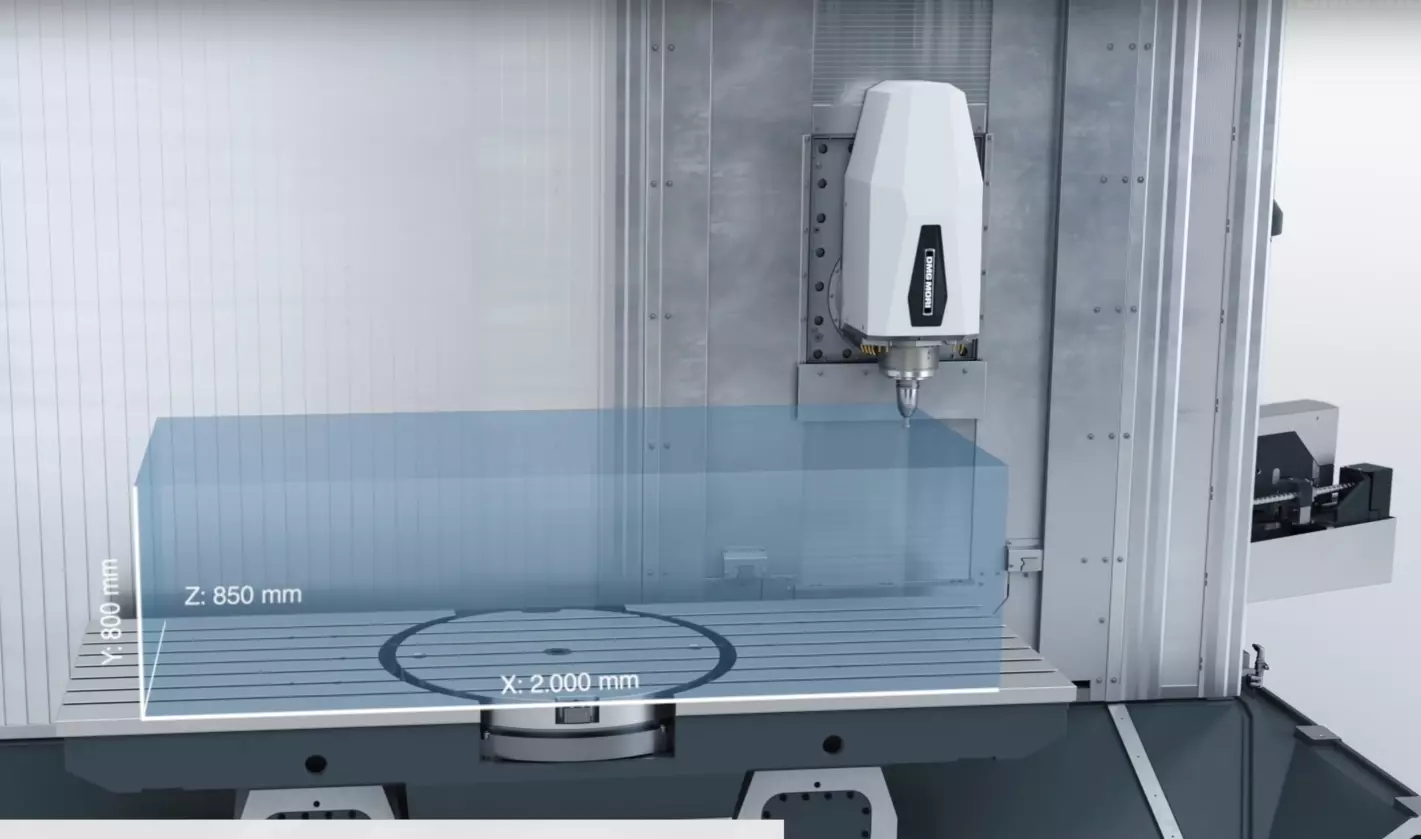
CNC machines have limits which we called axes strokes. Generally, it is allowed movement of a CNC machine by the manufacturer. You can see a representation of the working limits and size of a CNC machine in the above picture.
For example, let’s look at a label of a CNC machine;
VMC 39.37in x 19.69in x 15.75in, RPM: 8000, ATC:30
The designation “VMC” refers to the type of CNC machine, specifically a Vertical Machining Center. However, it could also be an HMC (Horizontal Machining Center) depending on the machine’s configuration.
RPM stands for revolutions per minute and indicates the spindle’s speed. Standard CNC machines for mechanical component manufacturing usually operate at max:8,000 RPM. This speed is sufficient for general machining tasks like drilling, facing, and contouring. For more complex surface machining, such as molds or aerospace parts, higher RPM machines with speeds up to 30,000 RPM may be required.
ATC:30 denotes the Automatic Tool Changer‘s capacity. An Automatic Tool Changer is an integrated system that automatically changes tools based on CNC commands (e.g., T1 M6). In this case, the machine has 30 tool pockets or stations, allowing for mounting up to 30 different tools. While a medium-range CNC machine typically holds 30 tools, advanced machines can accommodate hundreds of tools.
You can see an ATC – Automatic Tool Changer in action in below animated image;
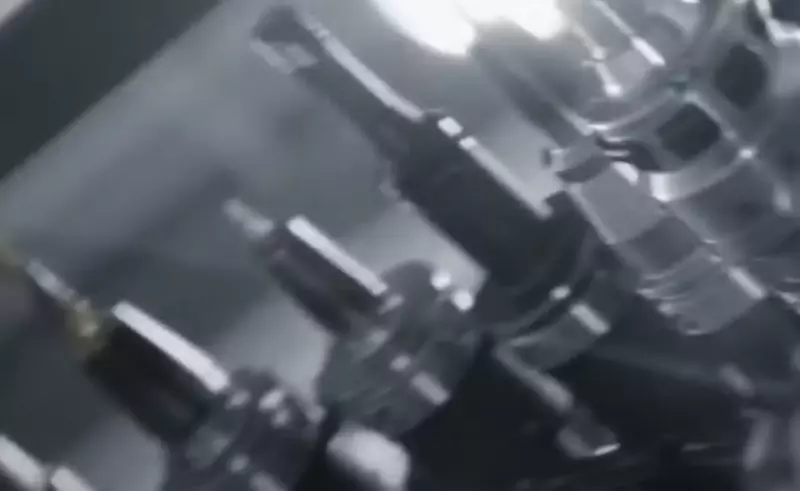
Understanding the size variety of CNC machines is crucial when selecting and operating the right machine for specific manufacturing needs. The size and capabilities of a CNC machine determine its suitability for different applications and the range of operations it can perform.
Types of CNC Machining Operations
When we talk about CNC machines, we often categorize them by the kind of operations they perform. For example, for milling and drilling operations Machining Centers (VMC, HMC) are pronounced often.
For turning operations you will hear the name of CNC Lathe often. Let’s look closer at some of these operations. There’s drilling, where a cylindrical hole is created in a workpiece.
Then there’s milling, where a rotating tool with multiple cutting edges creates flat surfaces or cutouts. And there’s turning, which involves the rapid spinning of a workpiece while a cutting tool shapes it.
CNC Machining Equipment and Components
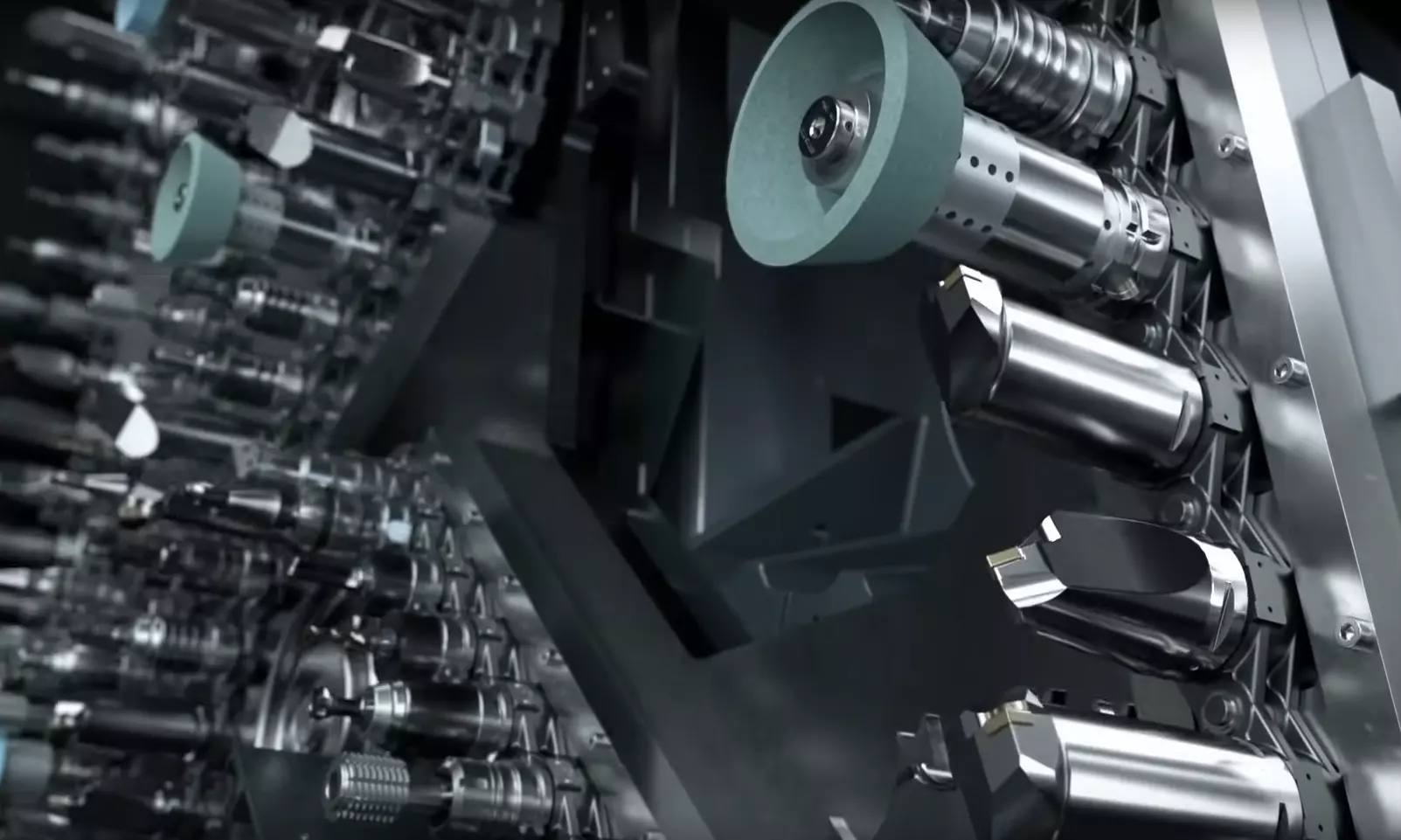
The world of CNC machining is rich with a variety of tools and components, each with its unique purpose. From end mills and face mills to slot mills and flat mills, each tool contributes to the versatile capabilities of CNC machines.
And let’s not forget the tools used for hole-making – center spot drills, taps, cutting taps, reamers, and counterbores. Each tool, in its own way, helps to shape, mold, and create the parts we need.
The below table shows the common basic equipment and components of a CNC machine.
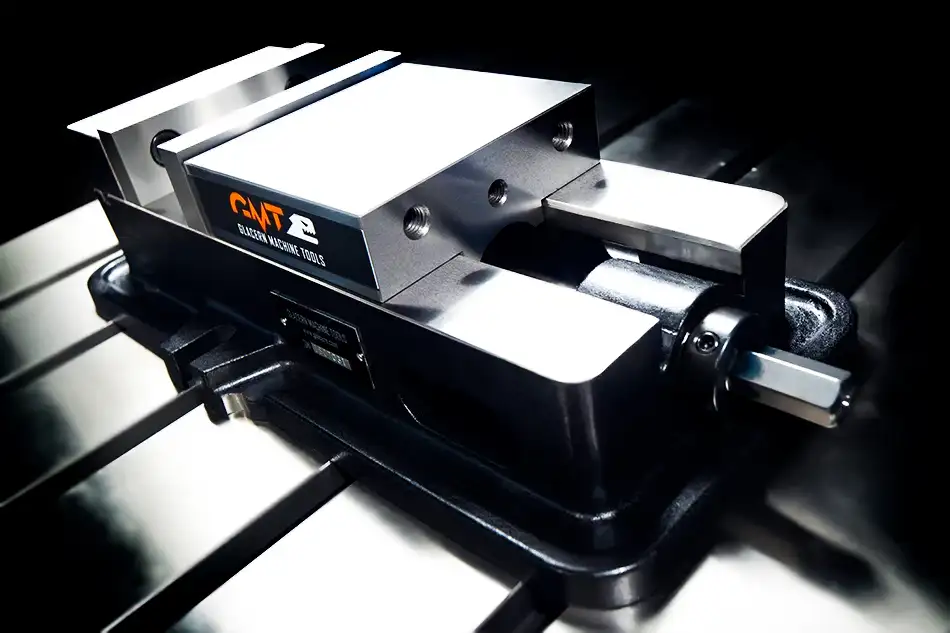
Materials machined with CNC machines
You may think about what is related to the materials in an introductory article for CNC machining. Surprisingly, materials are one of the most important topics of CNC machining. Let me explain…
Every CNC machine is designed to machine some material groups. For example, Routers are generally less rigid and designed to machine soft materials like Plastics, Woods, and aluminum cans with some limitations.
On the other hand, A vertical machining center or an HMC can effectively remove materials from hard metals like hard metals such as stainless steel, carbon steel, titanium, and Inconel.
Because these machines are designed to machine hard metals. As a result, you can machine soft materials too on these machines due to their high rigidity.
Rigidity plays a vital role in CNC machining. When you pay for a CNC machine the cost of a CNC machine is directly related to its rigidity of the machine. Because rigid machines are heavier and incorporate more components.
The table below shows material classes can be machined by the rigidity level of the CNC machine;
| Machine Rigidity | Machinable Materials |
|---|---|
| Low Rigidity | Plastics, Woods, Soft Aluminum |
| Medium Rigidity | Brass, Copper, Mild Steel, Bronze |
| High Rigidity | Stainless Steel, Carbon Steel, Titanium |
| Very High Rigidity | Hardened Steel, Inconel, Tool Steels |
Also, you can see in the table below materials commonly used today in CNC machinery;
| Machinable Materials | Application Areas |
|---|---|
| Aluminum | Aerospace, Automotive, Electronics, Consumer Goods |
| Stainless Steel | Aerospace, Automotive, Medical, Food Processing |
| Carbon Steel | Construction, Industrial Equipment, Machinery |
| Brass | Plumbing, Musical Instruments, Decorative Hardware |
| Copper | Electrical Wiring, Electronics, Plumbing |
| Titanium | Aerospace, Medical Implants, Defense |
| Plastics (e.g., ABS, PVC, Nylon) | Prototyping, Packaging, Consumer Products |
| Wood (e.g., Oak, Maple, MDF) | Furniture, Cabinetry, Flooring |
| Composite Materials (e.g., Fiberglass) | Aerospace, Marine, Sports Equipment |
| Acrylic | Signage, Displays, Lighting |
Diverse Applications of Computer Numerical Control Machining
When CNC machines first arrived they were mostly used for the Aerospace industry. As you can guess aerospace industry requires softened complex surfaces to eliminate air resistance. This improved the CAD/CAM technology and people were able to design and machine unbelievable surfaces (ISO, Nurbs surfaces) on metals, plastics, woods, and composite materials.
The opened door Automotive industry take-off enabled us to produce injection and progressive molds(which require highly complex surfaces)
Besides being able to machine and designing complex parts we were able to machine those parts in thousands with a very fast turn-around time. I got a lot of hassle from the manual machinists and fed modern society with consumable parts.
As I mentioned CNC machining is a versatile technology, that finds applications in an array of industries. Some of the most common applications include:
- Aerospace Industry: CNC machining plays a crucial role in manufacturing aircraft components, ensuring precision and reliability. Turbine blades, engine parts, and structural elements are produced with high accuracy and strict tolerances, ensuring optimal performance and safety.
- Automotive Industry: CNC machining is extensively used in the automotive sector for producing engine parts, transmission components, and suspension systems. The technology allows for rapid prototyping and efficient mass production of complex parts. It ensures consistency and quality.
- Medical Industry: CNC machining is employed to manufacture surgical instruments, implants, and prosthetics. The technology enables the production of intricate, custom-made parts, catering to the specific needs of patients and healthcare providers. In the dental area, even you can have CNC-machined custom teeth.
- Electronics Industry: Such as circuit boards, enclosures, and connectors. The technology allows for precise and efficient production of small, intricate parts, ensuring the functionality and reliability of electronic devices.
- Mold and Die Making: CNC machining is widely used in the mold and die-making industry. It is also called tool making.
Advantages and Benefits of Computer Numerical Control Machining
Before continuing to understand the relation between materials and CNC machining please don’t forget that I wrote a comprehensive article about materials(especially metals). You can read it if you want more details.
CNC machining ensures numerous advantages, which have led to its widespread adoption across industries. Some of the key benefits include:
- High Precision and Consistency: CNC machines follow programmed instructions with pinpoint accuracy, ensuring consistent production of high-quality parts. This level of precision is critical in industries like aerospace and medicine, where even the slightest deviation can have severe consequences.
- Flexibility and Customization: CNC machining enables the production of custom parts, catering to specific design requirements. By simply altering the CAD/CAM program, manufacturers can produce different parts without the need for additional tooling or setup.
- Reduced Labor Costs: CNC machines can operate autonomously, reducing the need for manual intervention. This leads to lower labor costs and increased efficiency, allowing businesses to remain competitive in today’s global market
- Enhanced Speed and Productivity: CNC machines can operate around the clock, significantly increasing production rates compared to manual machining. Moreover, the technology allows for rapid prototyping and faster production cycles. This improves costs and customer happiness.
- Machining hard materials: One of the most important advantages of using CNC machines is that you can machine very hard metal easily with high-speed machining strategies(a strategy cutting with less tool engagement, and plunging to material with maximal depth in a high feed rate).
- Reduced Material Waste: CNC machining minimizes material waste by optimizing the use of raw materials and producing parts with high accuracy. This not only reduces production costs but also contributes to sustainable manufacturing practices.
- Improved Safety: CNC machines require minimal human intervention, reducing the risk of accidents and injuries. Additionally, most modern CNC machines are equipped with safety features, such as sensors and automatic shut-off mechanisms, ensuring a safer working environment.
- Seamless Integration with Other Technologies: CNC machining can be easily integrated with other manufacturing technologies, such as 3D printing, robotics, and IoT (Internet of Things). This synergy enables manufacturers to leverage the benefits of multiple technologies, leading to more efficient and innovative production processes.
Is an Alternative to Using a CNC Machine
Of course, CNC machining isn’t the only game in town. There are other manufacturing methods you might consider.
Manual machining, for example, offers hands-on control and can be more cost-effective for short runs. 3D printing allows for rapid prototyping and complex designs. Today`s 3d printers can print metal parts too.
It is not precise as CNC machining however can be good for prototype works. And finally, injection molding is ideal for producing large quantities of plastic and aluminum parts.
The Future of CNC Machining: Embracing Industry 4.0
The future of CNC machining is exciting, Industry 4.0 and the increasing adoption of innovative manufacturing technologies promise further advancements.
What is Industry 4.0
You may wonder what I am meaning by Industry 4.0. It is basically the latest industry level of humanity from the key historical revolutions. I put a table which will clear up it for you;
Some emerging trends to watch out for include:
- Advanced Robotics: The integration of robotics with CNC machining will enhance automation, allowing for more efficient material handling, assembly, and quality control processes.
- AI-Driven Optimization: Artificial intelligence (AI) algorithms will play a vital role in optimizing CNC machining processes, enabling real-time adjustments and predictive maintenance, ensuring maximum efficiency and minimal downtime. In mechutopia.com we already started to use some AI technologies to produce CNC programs.
- Augmented Reality (AR) and Virtual Reality (VR): AR and VR technologies will revolutionize CNC machine programming, training, and maintenance. They offer immersive experiences, enabling operators and technicians to visualize complex processes and troubleshoot issues more effectively.
- Additive Manufacturing: The convergence of CNC machining and additive manufacturing (3D printing) will enable manufacturers to create hybrid production methods, combining the best of both technologies for more efficient and innovative product development.
I wrote an article about how AI will take place in CNC machining here.
Conclusion
CNC machining has come a long way since its inception in the 1940s, transforming the manufacturing industry with its versatility, precision, and efficiency.
Today everyone can access information very fast, so mechutopia.com is committed to providing quality content in this area. We know the importance of Self-Education.
As we look forward to the future, the integration of advanced technologies and Industry 4.0 trends will further enhance CNC machining capabilities, leading to more innovative, sustainable, and competitive manufacturing processes.
This article can be helpful for you if you need more information;
How hard is learning CNC Machining?
Best Ways Of learning CNC Machining
FQA for CNC machining introduction.
1. What is CNC machining and how does it work?
CNC machining, short for Computer Numerical Control machining, is a process that utilizes computerized control systems to automate and precisely control the movement of cutting tools in axes like X, Y, and Z. It works by converting a CAD model into a CNC program, which guides the CNC machine in creating the desired part with calculated and executed movements.
2. How do CNC machines work?
CNC machines are operated by computers, electronic drivers, and servo motors. Machinists or programmers write CNC programs and send them to the machine’s control system. The machine reads the program line by line, calculates variables, and sends commands to dedicated drivers and servo motors. The servo motors position the machine’s components with high precision, executing the programmed instructions.
3. What are the types and sizes of CNC machines?
CNC machines come in various types and sizes, such as CNC mills, CNC lathes, CNC routers, CNC plasma cutters, CNC lasers, CNC EDM machines, and CNC grinders. Each type is designed for specific functions. The size and capabilities of CNC machines determine their suitability for different applications and the range of operations they can perform.
4. What materials can be machined with CNC machines?
CNC machines can work with a wide range of materials, including metals like aluminum, stainless steel, carbon steel, brass, copper, titanium, and hardened steel. They can also machine plastics, woods, composite materials, and more, depending on the machine’s rigidity and capabilities.
5. What are the advantages and benefits of CNC machining?
CNC machining offers advantages such as high precision and consistency, flexibility and customization, reduced labor costs, enhanced speed and productivity, the ability to machine hard materials, reduced material waste, improved safety, and seamless integration with other technologies.
6. Is CNC machining the only option, or are there alternatives?
CNC machining is not the only option. Alternatives include manual machining, 3D printing, and injection molding offer benefits for specific applications. With injection molding, a lot of parts can be manufactured easily, and 3d printing gives cutting-edge abilities to produce prototypes. Manual machining is still in demand for short-run jobs.
7. What does the future hold for CNC machining?
The future of CNC machining includes advancements such as advanced robotics, AI-driven optimization, augmented reality and virtual reality integration, and the combination of CNC machining with additive manufacturing technologies.
